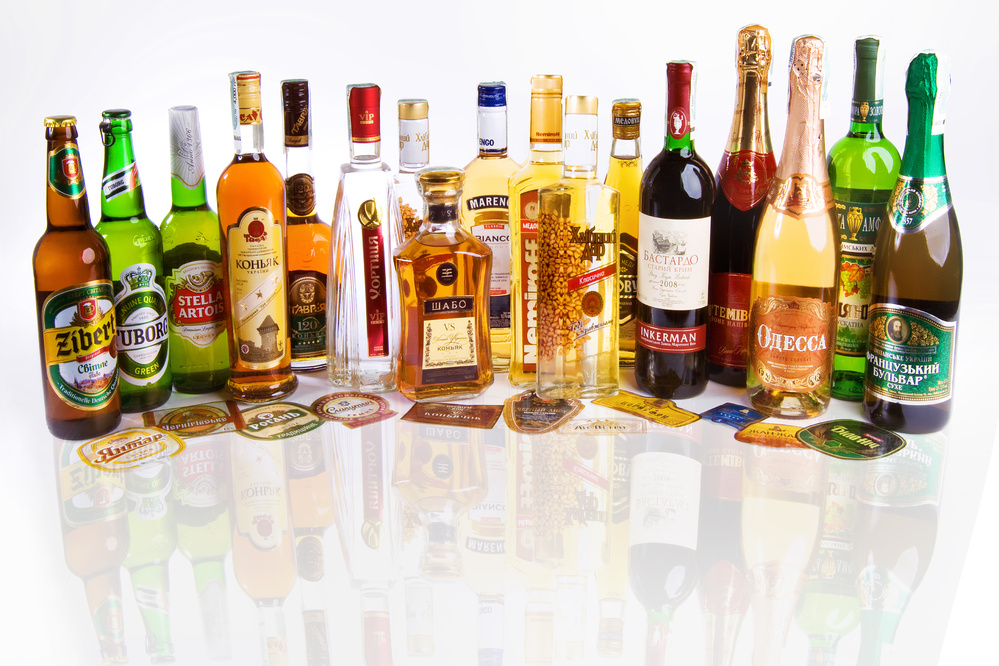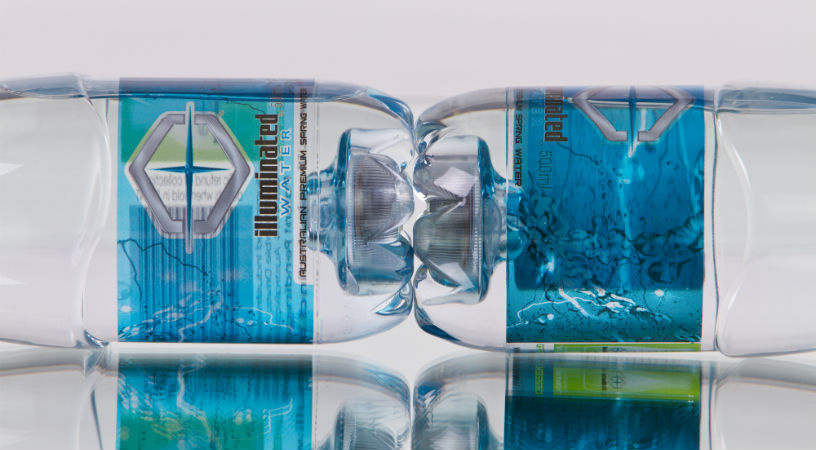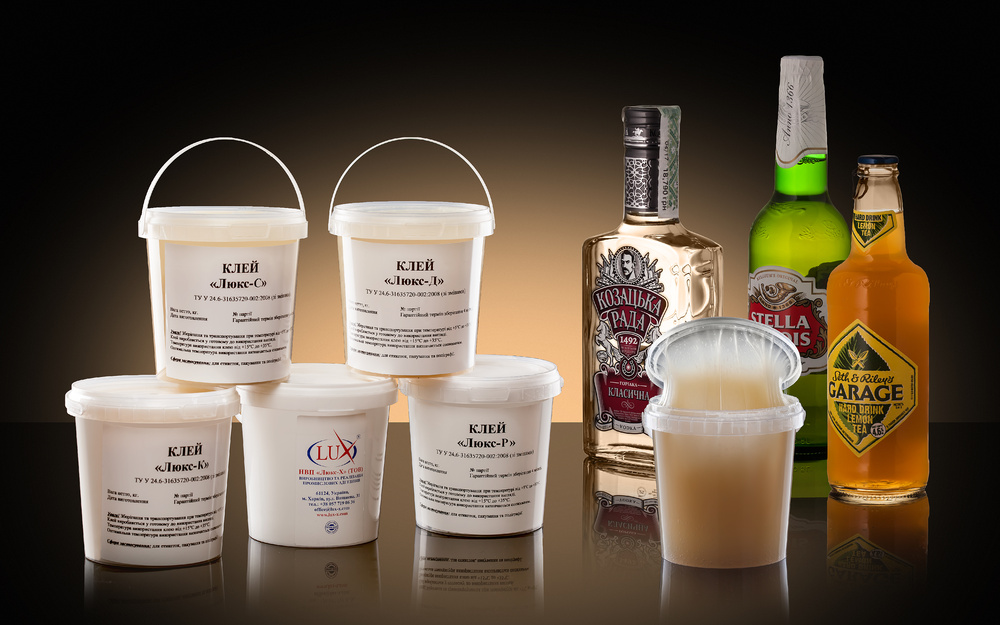Сhoosing the right label adhesive
Understanding the technology of applying the adhesive that underlies labeling can help manufacturers choose the right product. This article covers different types of label adhesives, the terminology related to adhesives, application features, as well as consumer and environmental advantages.
Types of label adhesives
Labels can be divided into three main categories: removable, movable, and permanent. Understanding the category of labels requiring special adhesive will be a starting point for the right selection of adhesive. A certain type of labels clearly indicates the level of adhesive capacity that the adhesive should provide. For example, the adhesive for removable labels guarantees sufficient capacity to adhere to the surface when applied without increasing the strength of the adhesive, and remains in this state until the label is removed.

Each type of label has its own unique functionality and application:
- Removable labels. As we have already mentioned above, these labels can be easily removed without leaving a trace. To achieve this, it is extremely important to balance the strength and possibility of removal, ensuring optimal stability when the label adhesive undergoes decohesion. Typical examples of this application are foodstuffs, price tags, and advertising stickers.
- Movable labels (with the possibility to be re-applied). This is a variety of removable labels that allows users to remove and re-apply labels without сreases, wrinkles, and bubbles created. The most common example of such labels is stickers.
- Permanent labels. Unlike removable or re-applied labels, a permanent label cannot be removed without its damage or deformation. This makes them ideal for making labels protected from unauthaurized access, including tags for chemicals, and labels for general use.

Although adhesives for permanent labels are actually more durable than those for removable ones, when choosing adhesives, it is still necessary to take into account the environment and conditions in which they will be applied.
Two types of adhesives are used for gluing labels: water-based ones (cold-applied adhesives) and hot-melt adhesives.
In water-based adhesives, they use water as a solvent. It hardens due to the evaporation of water or its absorption by the surface. Cold-applied adhesives are mainly used for labeling glass containers with paper labels. Dispersion adhesives for labels are so popular due to the fact that they are easily washed off with water that is advantageous when re-using glass containers.
Hot-melt adhesives are made liquid by heating. They are applied to the product while being hot: either in liquid form, or as a high viscosity paste. The absolute advantage of hot-melt adhesive is good adhesion to wet surfaces. Hot-melt adhesives are mostly used to attach polymer labels to PET containers.

Terminology relating to adhesives
It is helpful to understand the properties of various adhesives and how they affect the characteristics in order to choose the right adhesive for a particular type of application. The properties of adhesives include:
- Adhesive capacity. Initial adhesion to the surface with minimal pressure. It is easier to remove adhesives with low adhesive capacity from surfaces.
- Adhesion. Strength of the bond between the adhesive and the surface after pressure. Higher adhesion will make it difficult to remove the label and may cause the substrate or label to break.
- Decohesion. It is the effort required to remove the adhesive from the surface. Adhesives with lower decohesion properties are easier to remove.
- Shifting. The ability of the adhesive to withstand the efforts applied in opposite directions. Softer adhesives have lower shifting strength, higher degree of adhesive capacity and are more likely to break during shifting.
- Temperature. The minimum application temperature is the lowest temperature at which the adhesive bonds to the substrate. The operating temperature is the minimum and maximum temperatures at which the adhesive retains its strength.
Guidelines to select the right adhesive
Additional factors that should be taken into account when choosing adhesive include the surface of the substrate, since each type of adhesive is intended for certain materials such as glass, plastic, metal and others.
Specific application requirements may also affect the type of adhesive used. For example, in the food industry and beverage production, some containers are filled with hot water to sterilize the contents, while bottles with carbonated drinks usually get expanded, with the label expanding, too. The adhesive used for such applications must be suitable for a specific surface and temperature, and provide the necessary properties that allow the label to stretch out.

Besides, now ecology issues are crucial in choosing adhesives for labels. For example, the beverage industry using PET bottles is gradually transferring to a closed-loop "re-use" economy model, in which alkali-washable adhesives allow to completely remove labels and adhesive from PET bottles before they get on the market.
The line of Lux adhesives presents an adhesive for labeling glass containers for beer and sparkling wine, resistant to "iced" water, the so-called IWR adhesive. Resistance to "iced" water means the fixation of the label when the bottle is submerged in water at about +5°C for several days, while the adhesive does not get soggy and the label stays fixed. It is also important that this product is easily washed off the returnables in the bottle washer. The adhesive is cost-efficient and effective when working at high speeds.
For gluing the excise stamp, a special brand presented in the Lux-K line is applied, which stands out for light colour and is almost invisible in a thin layer on the excise stamp, it boasts good adhesion properties in relation to most polymer materials and lacquers, and also provides fast bonding and "clean" bond line.
In the sector of labeling wine containers, adhesive is used for high-density labels, according to the characteristics related to cardboard, and not to labeling paper. Such labels look expensive and unique on wine bottles. The special brand of Lux adhesive stands out for its increased adhesive parameters and a short bonding time.

Improving the effectiveness of adhesives for marking and labeling
The selection of a proper adhesive for marking is rather simple provided the following conditions are met:
- the material or container to which you need to glue a label;
- label type (permanent, removable or movable);
- you should provide specific requirements regarding the application, operating temperature, and contents of the bottle, such as carbonated or non-carbonated beverages, etc.
Actually, each application is unique and each company has at its disposal a combination of various equipment, label materials, different environmental conditions and performance criteria that require testing the adhesive before it is put into production.
That is why we strongly recommend working with reliable manufacturer who will be able to suggest either available adhesive, or develop a customised composition that exactly meets your needs for label adhesive, providing both lab tests of materials and comprehensive support while testing new adhesive.
Buying label or excise stamp adhesives
If you are engaged in manufacturing and you need to choose an adhesive for gluing labels or excise stamps, please contact Lux-X company. Our team will help you improve productive capacity at your enterprise by choosing the right adhesive for your production processes. Just call us at +38 057 766-06-36, send an email to office@lux-x.com or fill out an enquiry form on our website lux-x.com






